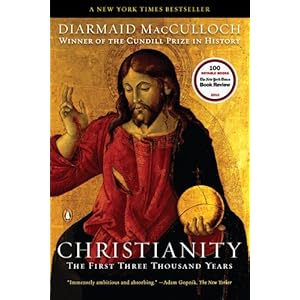 Takeaway: Unintended consequences are myriad.
Takeaway: Unintended consequences are myriad.
Purchase Links: Hardback, Paperback, Kindle Edition, Audible.com Audiobook (If purchasing, you want to think about paperback or audiobook. Kindle is the most expensive option at $29.99)
I am probably taking more time talking about this book than most people really want. (And frankly, I often do not read multi-part posts of others.) But there are few books like this that are really trying to speak to the whole of Christian history. It is something that all Christians should spend some time learning about. I do not think that all Christians need to have years of Christian history to be a Christian, but I do think that understanding the rise (and problems) of Christianity really can help us understand what is right and wrong about our own perspectives on Christianity.
There are really two parts to this next section. The rise of the culture of monasteries/convents and the crusades. In general, the monasteries and convents were the center of the church life. These were not hermitages, but centers of learning and thought (some more than others.) The Irish focus on learning and books really saved much of the ancient texts that we still have and they were every bit as ascetic as the early Egyptian desert fathers. The organization of the church cannon law (which lead to the European governmental systems) was a result of the specialization of the monasteries. Virtually all popes have been experts in cannon law, rather than pastors from the mid-800s on. The single sex focus of the monasteries/convents also gave rise to a fairly large group of well educated and powerful women.
The problem with the monasteries was that they were expensive. So powerful secular rulers donated to keep them running, benefited from their knowledge base, but also wanted something in return. At the same time the concept of purgatory started gaining ground and those monasteries started ordaining the monks (which they had not previously) in order for the monks to start saying masses. These masses were performed for secular leadership to help them through purgatory. This give and take of political and financial power lead to the crusades. It is hard to gain power and wealth if you do not have something to rally people around. The crusades had all kinds of unintended consequences. One of the most tragic in the long term, was the permanent separation of the church of the East and West. The Eastern church asked for the first crusade to help them against the rise of Islam. But the crusades just destabilized the Eastern church (and the remains of the Eastern empire) and actually did much to allow for the rise of Islam. In addition, the power struggles in the west around the crusades moved the fights from east to west and contributed to the chaos of multiple popes and internal crusades in the west. And all of that has not even mentioned the huge numbers of lives that were lost on all sides.
The crusades also significantly shifted theological understanding of war. Previous to the crusades, warriors might have been necessary, but killing people, even in war, was still considered sin. Previous to the crusades there were masses said to help move people through purgatory sooner, but it was only on the occasion of the first crusades that Pope Urban gave plenary indulgences (get out of purgatory free card). And these were given to soldiers, a significant theological shift. Indulgences were then used for later crusades and general fundraising and were a significant factor in rise of corruption of the church that eventually lead to the Reformation.
I have picked up Rodney Stark‘s book God’s Battalions that treats the crusades much more extensively (and from what I understand much more positively). So I am not going to talk any more about them here.

0 thoughts on “Christianity: The First Three Thousand Years by Diarmaid MacCulloch – Part 5 (Crusades and Monasteries)”